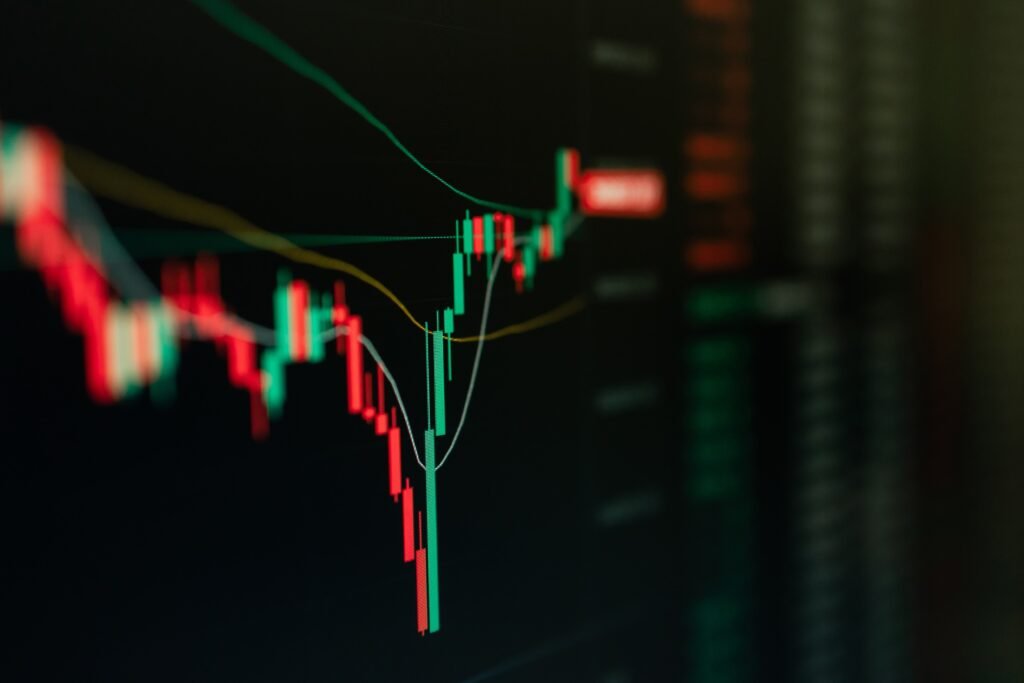The “W Trading Pattern” is a renowned and highly regarded pattern within the trading community. It is a reversal pattern that is often used to identify the change in the trend of a financial market. This pattern is characterized by its unique ‘W’ shape, which is formed by two troughs and a peak. Traders often leverage this pattern to pinpoint potential buy signals in the market, making it an invaluable tool for those looking to optimize their trading strategies.
Key Takeaways:
- The W Trading Pattern is a reversal pattern used to identify changes in market trends.
- It is characterized by its distinctive ‘W’ shape, formed by two troughs and a peak.
- This pattern is highly regarded in the trading community and is used to pinpoint potential buy signals.
- Understanding the W Trading Pattern is crucial for optimizing trading strategies and mitigating risks.

Understanding the W Trading Pattern
Characteristics of the W Trading Pattern
The W Trading Pattern is easily recognizable due to its distinctive shape. Here are the primary characteristics of this pattern:
- Two Troughs: The pattern consists of two troughs, representing low points in the price movement.
- One Peak: Situated between the two troughs, the peak represents a high point in price movement.
- Reversal Indicator: The completion of the pattern is a strong indicator of a reversal in the prevailing trend.
Formation of the W Trading Pattern
The formation of the W Trading Pattern is a meticulous process, involving several stages:
- Initial Decline: The pattern begins with a decline in prices, forming the first trough.
- Partial Recovery: Following the initial decline, prices experience a partial recovery, creating the peak.
- Second Decline: After the partial recovery, prices decline again, forming the second trough.
- Breakout: Finally, prices break out, completing the pattern and indicating a potential reversal in trend.
Importance of the W Trading Pattern
Understanding and recognizing the W Trading Pattern is crucial for traders as it provides insights into potential market reversals. This pattern is particularly beneficial for those involved in swing trading and day trading, allowing them to make informed decisions and optimize their trading strategies.
How to Trade the W Trading Pattern
Identifying the Pattern
Identifying the W Trading Pattern involves observing the price movements and recognizing the formation of two troughs and a peak. Traders should pay close attention to the price levels of the troughs and the peak, as well as the volume during the formation of the pattern.
Setting Stop-Loss and Take-Profit Levels
Once the pattern is identified, traders need to set appropriate stop-loss and take-profit levels to manage risks effectively. A common practice is to set the stop-loss below the lowest trough and the take-profit above the peak of the pattern.
Evaluating Risk and Reward
Evaluating the risk and reward is essential when trading the W Trading Pattern. Traders should assess the distance between the stop-loss and take-profit levels and determine whether the potential reward justifies the risk involved.
Practical Application of the W Trading Pattern
Incorporating Other Technical Indicators
While the W Trading Pattern is a powerful tool, incorporating other technical indicators such as moving averages, RSI, and MACD can enhance its reliability. These indicators can provide additional confirmation and insights, allowing traders to make more informed decisions.
Backtesting the Pattern
Before applying the W Trading Pattern in live trading, it is advisable to backtest it using historical data. Backtesting helps in validating the effectiveness of the pattern and fine-tuning the trading strategy.
Adapting to Market Conditions
The effectiveness of the W Trading Pattern can vary depending on market conditions. Traders should be adaptable and consider the prevailing market environment when applying this pattern.

Tables with Relevant Facts
|
Stage |
Description |
Importance |
|---|---|---|
|
Initial Decline |
Formation of the first trough |
Identifies the start of the pattern |
|
Partial Recovery |
Creation of the peak |
Provides insight into potential reversal |
|
Second Decline |
Formation of the second trough |
Confirms the pattern formation |
|
Breakout |
Completion of the pattern |
Indicates a reversal in trend |
This article has provided a comprehensive overview of the W Trading Pattern, its characteristics, formation, and practical application. The insights and strategies discussed here are instrumental in understanding this pattern and leveraging it for optimized trading outcomes.
Advanced Strategies for the W Trading Pattern
Utilizing Fibonacci Retracement Levels
When trading the W Trading Pattern, incorporating Fibonacci retracement levels can enhance precision in identifying potential reversal points. These levels help traders to pinpoint exact entry and exit points, maximizing profitability and minimizing risk.
Volume Analysis
Volume analysis is crucial in validating the W Trading Pattern. A surge in volume during the breakout phase provides additional confirmation of the pattern’s completion and the impending reversal. Conversely, low volume may indicate a false breakout and necessitate caution.
Time Frame Consideration
The effectiveness of the W Trading Pattern can vary across different time frames. While it can be observed in shorter time frames like 15-minute charts, it often holds more reliability in longer time frames such as daily or weekly charts.
Mitigating Risks with the W Trading Pattern
Setting Realistic Profit Targets
While the W Trading Pattern can offer lucrative opportunities, setting realistic profit targets is essential. Traders should avoid excessive greed and establish profit targets based on thorough analysis and market conditions.
Using Protective Stops
Implementing protective stops is vital in mitigating risks. Traders should place stop-loss orders strategically to protect their capital from significant losses in case the market moves unfavorably.
Advanced Application of the W Trading Pattern
Combining with Candlestick Patterns
Combining the W Trading Pattern with various candlestick patterns can provide enhanced market insights. For instance, a bullish engulfing pattern at the second trough can serve as a strong buy signal, reinforcing the reliability of the W Trading Pattern.
Applying Trend Lines
Drawing trend lines along the peaks and troughs of the W Trading Pattern can help in visualizing the pattern more clearly and identifying breakout points with higher accuracy.
Tables with Relevant Facts
|
Factor |
Consideration |
Impact |
|---|---|---|
|
Volume |
High volume during breakout |
Provides confirmation of the pattern |
|
Time Frame |
Longer time frames |
Increases reliability of the pattern |
|
Additional Indicators |
Use of Fibonacci levels, candlestick patterns |
Enhances precision and reliability |
|
Risk Management |
Setting protective stops, realistic profit targets |
Mitigates risks and protects capital |

